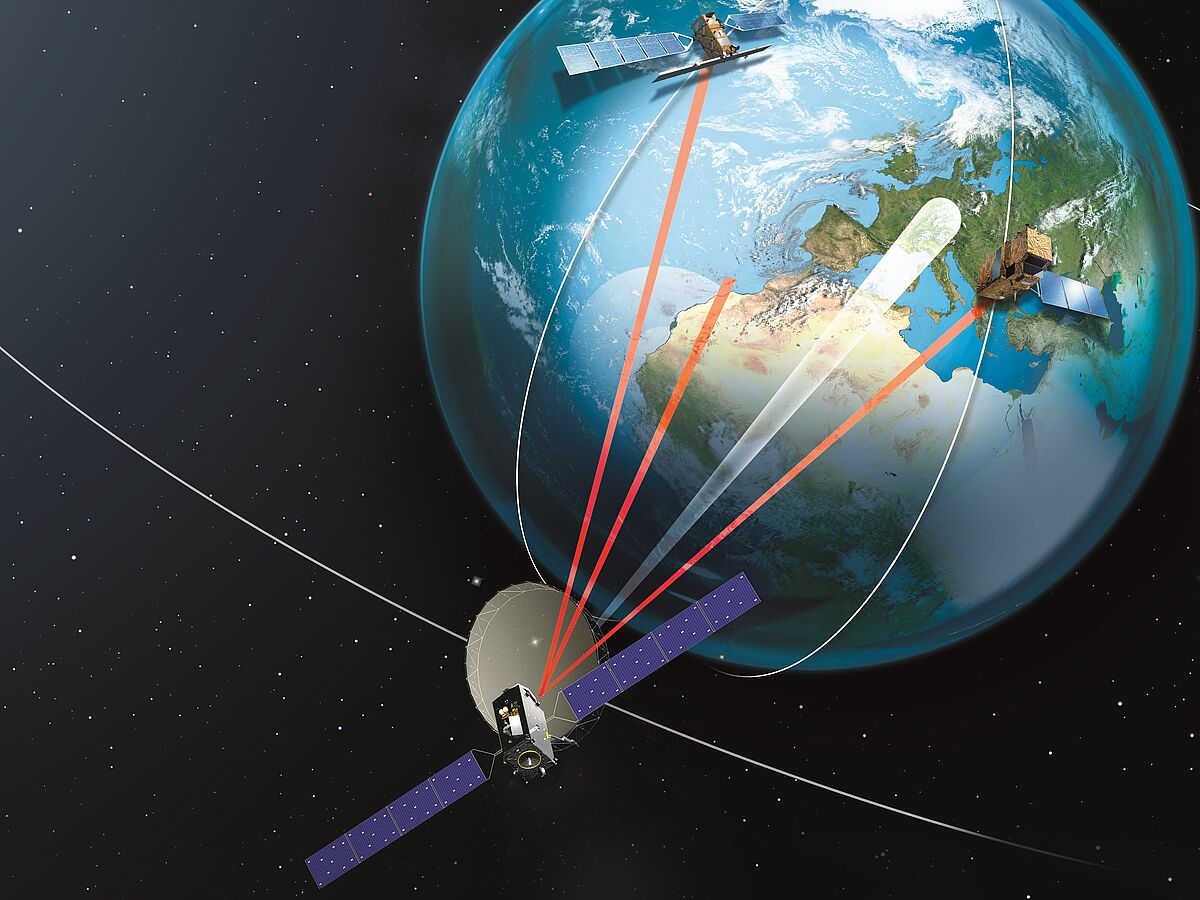The Ferdinand-Braun-Institut supplies a decisive component – a particularly robust and capable pump laser module
Transferring high data rates in real-time twenty-four-seven – a research team, under the direction of the European Space Agency ESA, has now come significantly closer to this aim. For the first time, data have been successfully transmitted between a near-earth and a geostationary satellite over a distance of 40,000 kilometers. In the future, satellites flying in this relatively low orbit shall provide data for environment and security surveillance in a kind of data highway in space. Also applications used for Earth observation and distance measurements can be significantly improved.
Laser modules sized as small as a chocolate candy from Berlin contributed to this success – the compact and extremely reliable laser diode benches from the Ferdinand-Braun-Institut (FBH) are located right in the heart of the capable laser technology. As pump sources for highly efficient solid-state lasers, these FBH benches ensure frictionless communication in laser communication terminals (LCT) of Tesat-Spacecom. LCTs are the core pieces for optical communication between satellites. With them, an increasing amount of data can be transferred quicker and more reliable via light over long distances. These terminals enable very high transfer rates of 1.8 Gbit/s – this corresponds to the content of around three standard DVDs per minute – between satellites in the near-earth and the geostationary orbit.
Resilent and extraordinarly reliable
The FBH pump modules utilized in the tests are robust and reliable so that they work frictionless even under the harsh conditions in space. After all, they have to survive the strong mechanical and thermal stress at the take-off and heavy cosmic radiation without failure. The laser module bases on a broad-area diode laser bar with GaAsP quantum wells embedded in an AlGaAs wave guide structure. Its wavelength is at 808 nanometers and stabilized by an external Bragg grating. The laser light is collimated by lenses and mirrors, finally coupled into an optical fiber pumping the solid-state laser in a highly efficient and reliable way.
Comprehensive FBH know-how in space applications
The FBH has long-term and comprehensive experience with space applications. The institute cooperates, among others, since more than 15 years with Tesat-Spacecom, Europe’s major supplier for equipment used in satellite communications, and works in projects with the national aeronautics and space research center DLR and the ESA for many years. In optoelectronics as well as in the field of microwaves and power electronics, a variety of R&D projects deal with satellite communications. Since 2008, the newly implemented laser metrology group works on the development of laser modules for space-borne experiments. Meanwhile, a growing number of FBH devices from optoelectronics, microwaves, and power electronics are therefore space-qualified.
Contact:
| Petra Immerz, M.A. Ferdinand-Braun-Institut Leibniz-Institut für Höchstfrequenztechnik Gustav-Kirchhoff-Straße 4, 12489 Berlin Communication & Public Relations Manager Phone 030.6392-2626, Fax 030.6392-2602 petra.immerzfbh-berlin.de www.fbh-berlin.de |


